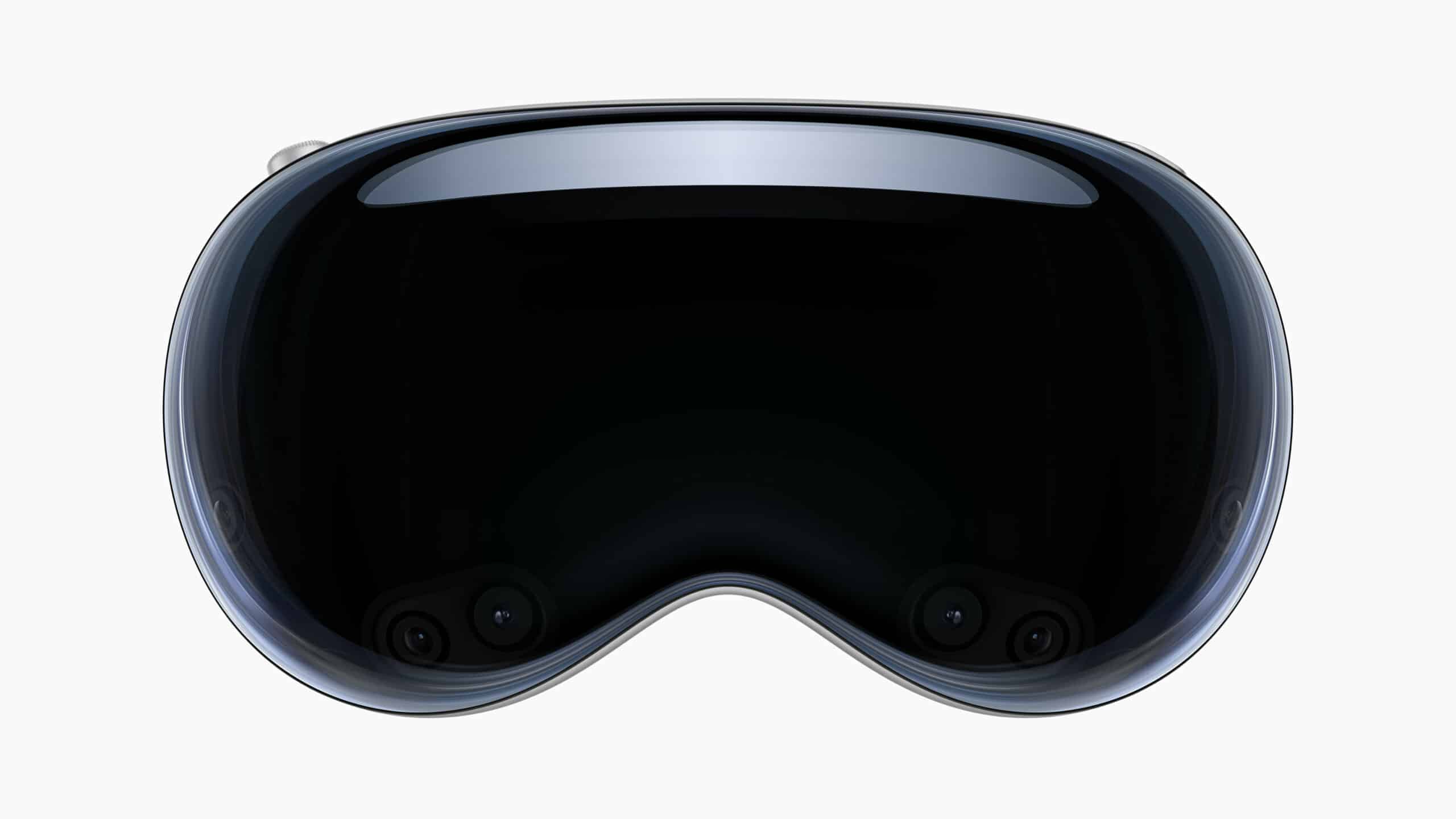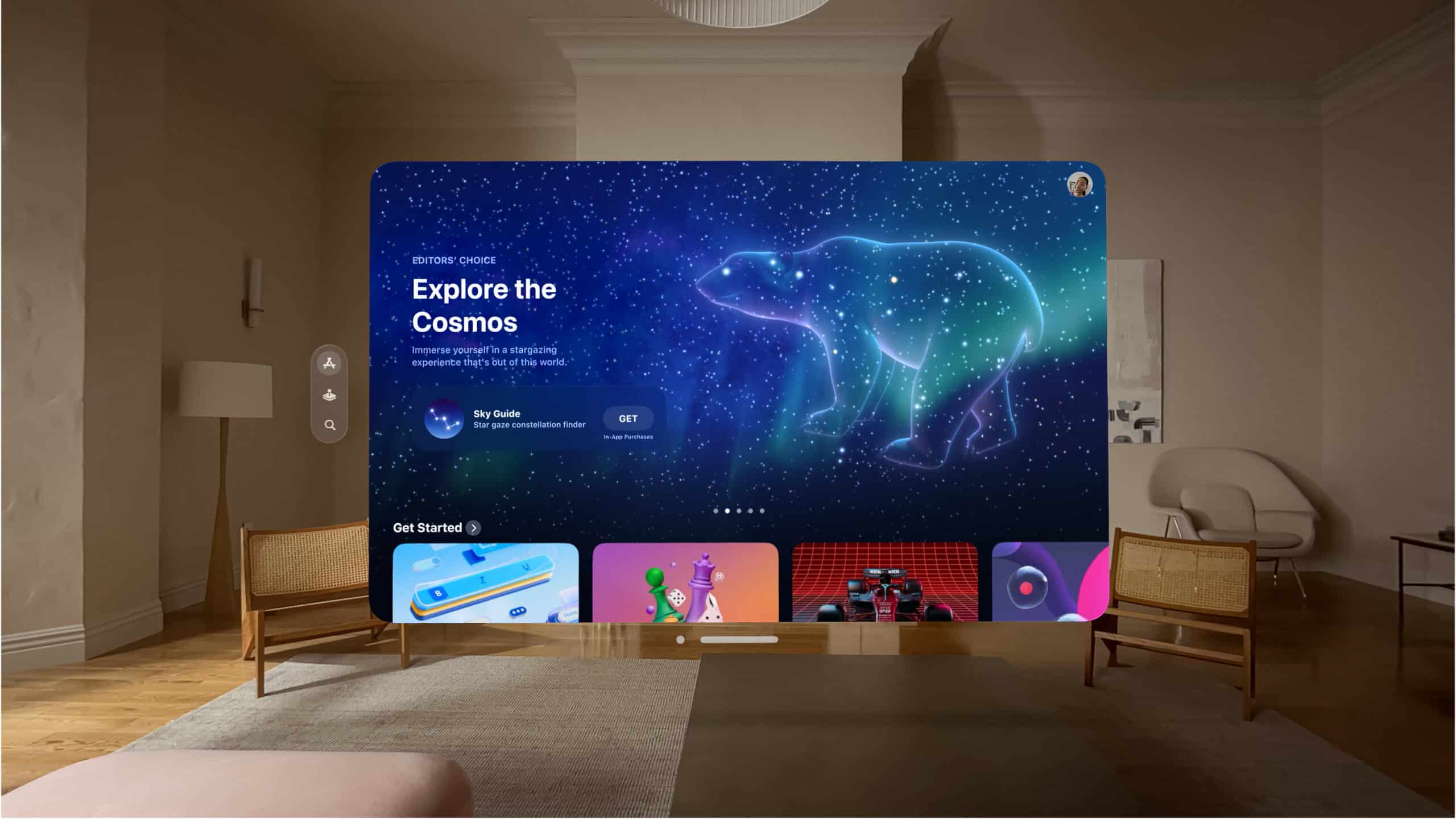Apple has announced the Apple Vision Pro – its first spatial computer with support for augmented reality and virtual reality experiences for a price tag of $3,499, at WWDC 2023. The headset features an M2 chip, an R1 chip, micro-OLED displays, spatial audio, and more. On the software front, Apple has announced a new operating system called VisionOS, which powers the headset and enables AR and VR experiences. Unlike other headsets, the input for the headset does not include controllers and is controlled through a person’s eyes, touch, and voice.

Apple Vision Pro
Apple Vision Pro is the company’s first platform since 2015, which includes a combination of brand-new hardware and software. The company has gone all out when it comes to revolutionary technology used in the headset. Here is a quick breakdown of the tech features:
- M2 chip
- R1 chip
- Custom micro‑OLED display system with 23 million pixels
- ZEISS Optical Inserts
- 12 cameras
- LiDAR scanner
- TrueDepth Camera
- Infrared flood illuminators
- Digital Crown to control immersion
That’s a lot to take in just from a technological standpoint. The micro-OLED display system itself is just one of the most complex and expensive components in the headset, while the others add to the experience that powers VisionOS.
VisionOS
VisionOS features a three-dimensional interface that features an almost infinite canvas. It puts apps in the real world, including games, multimedia, as well as productivity apps. Apple Vision Pro also allows users to connect their Mac to the headset and use it through the beautiful display, alongside other VisionOS apps. Alongside the built-in touch, vision, and voice controls, users can also connect a Magic Keyboard and Magic Trackpad for enhanced input and productivity.
For watching videos, Apple Vision Pro provides a display canvas that can stretch up to 100 feet wide. The immersive Spatial Audio experience ensures that users feel right at the center of their media experiences.
When it comes to apps and games, Apple will make all its 100+ Apple Arcade games available on the headset on day 1. Apple TV+ and Apple Music will also be available, while Disney announced that its video streaming service Disney+ will also make its way to the platform. Microsoft’s Office apps, Teams, Zoom, and many other apps also made an appearance during the announcement.

Thanks to a large number of cameras, the headset will also support the capture of immersive videos, as well as play them back on the headset. Users will be able to relive their memories captured on the headset, as well as access content from their iCloud library.
VisionOS will also bring FaceTime to the headset. Users will be able to view other call participants in their environment, while they can setup their 3D life-like persona which will be shown to other users during a FaceTime call.
Users will be able to navigate their way around VisionOS by using finger gestures to pinch, select, or move user interface elements, as well as use their voice to dictate text or use Siri.
Another feature called EyeSight will make the front of the headset seem transparent. When users are watching content, EyeSight will tell others that the user is busy. However, when someone approaches them, it will turn transparent, and show the user’s eyes to others.
As we said before, there’s a lot to take in just from a technological standpoint. Apple has gone many steps ahead of existing mixed-reality headsets, especially from the likes of Meta. Instead of focusing on putting people in a “metaverse”, Apple has focused on balancing between the digital and real world. While the headset design itself looks like ski-goggles, and might not be to everyone’s taste, the technological breakthroughs present in the device are enough to amaze everyone.
In terms of price and availability, Apple Vision Pro will cost $3,499 and will be available in early 2024 in the United States. It will roll out to more countries later in 2024.